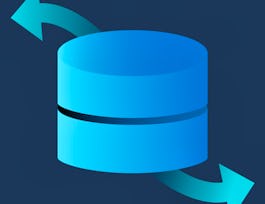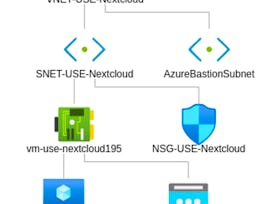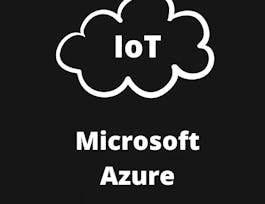This course is a part of the AZ-305 Designing Microsoft Azure Infrastructure Solutions Exam Prep Specialization and provides an overview of networking and migration in Azure. It is designed to equip you with the skills and knowledge required to identify, analyze, and address the networking requirements in cloud environments. You will also learn about key networking concepts, business requirements, performance considerations, and data migration requirements.



Networking and Migration in Azure
This course is part of AZ-305 Designing MS Azure Infrastructure Solutions Exam Prep Specialization


Instructors: Prateek Kumar
Sponsored by Abu Dhabi National Oil Company
Recommended experience
What you'll learn
Identify and analyze the networking needs of an organization.
Define key networking concepts and requirements based on business objectives.
Discuss dependencies, performance considerations, and data migration requirements.
Explain the importance of implementing logging and monitoring solutions for network traffic analysis.
Details to know

Add to your LinkedIn profile
7 assignments
See how employees at top companies are mastering in-demand skills

Build your subject-matter expertise
- Learn new concepts from industry experts
- Gain a foundational understanding of a subject or tool
- Develop job-relevant skills with hands-on projects
- Earn a shareable career certificate


Earn a career certificate
Add this credential to your LinkedIn profile, resume, or CV
Share it on social media and in your performance review

There are 4 modules in this course
This module aims to equip you with the knowledge and skills necessary to architect robust and efficient network solutions in the Azure cloud environment. You will delve into key networking concepts, explore Azure networking services, and learn how to design networks that meet the performance, security, and scalability requirements of modern applications.
What's included
6 videos4 readings2 assignments1 discussion prompt
This module is designed to empower you with the knowledge and skills required to plan and execute effective migration strategies for workloads to the Azure cloud. You will explore various migration scenarios, learn about key migration services and tools in Azure, and gain insights into best practices for a successful migration journey. Additionally, you will also explore concepts on Azure migration framework, migration tools, and accessing workload.
What's included
9 videos3 readings3 assignments1 discussion prompt
In this module, you will learn about how to design and implement high-availability solutions in the Azure cloud. You will also explore key concepts, best practices, and Azure services that contribute to achieving and maintaining high availability for applications and workloads. Additionally, you will also learn about Azure Availability Zones for enhancing the availability of virtual machines. Finally, you will gain more insights into the principles of geo-replication in Azure SQL Database and learn how to configure and manage geo-replication for Azure SQL Database.
What's included
6 videos3 readings2 assignments1 discussion prompt
This is a peer-review assignment based on the concepts of migrating SQL Server to Azure SQL Database using DMS taught in the Networking and Migration in Azure course. In this assignment, you will be able to learn about migrating SQL server to Azure SQL DB by performing various hands-on exercises to gain a better understanding of the same.
What's included
1 video2 readings1 peer review1 discussion prompt
Offered by
Why people choose Coursera for their career




Recommended if you're interested in Information Technology

Microsoft

Coursera Project Network

Coursera Project Network

Open new doors with Coursera Plus
Unlimited access to 10,000+ world-class courses, hands-on projects, and job-ready certificate programs - all included in your subscription
Advance your career with an online degree
Earn a degree from world-class universities - 100% online
Join over 3,400 global companies that choose Coursera for Business
Upskill your employees to excel in the digital economy



